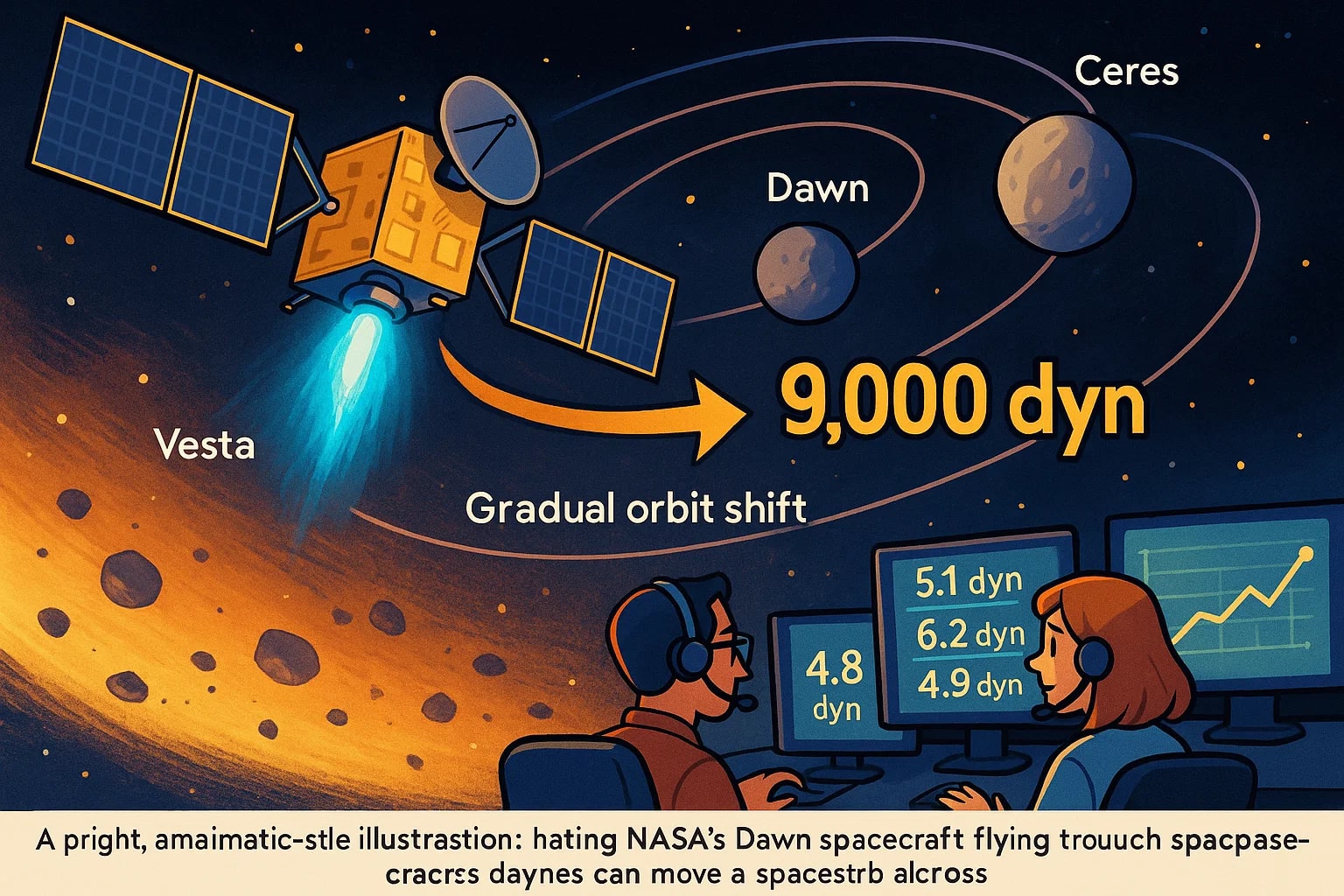newton to dyne – How to convert N to dyn
Converting newton to dyne may sound like a niche task, but in physics, engineering, and space science, it’s a crucial step in translating large and small-scale forces into meaningful data. This guide will explain both units, show you the exact formula, and reveal how a space mission depended on this conversion for precision navigation.

What is a newton (N)?
The newton is the SI (International System of Units) measure of force. It is defined as the force needed to accelerate a 1-kilogram mass by 1 meter per second squared.
1 N = 1 kg·m/s²
Newtons are widely used for everyday and large-scale engineering purposes — from measuring the thrust of a rocket engine to calculating the load on a bridge. When forces are large, newtons give a practical, easy-to-read figure without requiring too many zeroes.
What is a dyne (dyn)?
The dyne is a much smaller unit of force from the CGS (centimeter–gram–second) system. It is defined as the force needed to accelerate a 1-gram mass by 1 centimeter per second squared.
1 dyn = 1 g·cm/s²
In terms of scale, a single newton equals 100,000 dynes. Dynes are typically used in scientific fields where forces are extremely small — such as measuring surface tension in liquids, light pressure in optical experiments, or tiny spacecraft adjustments.
Formula for converting N to dyn
The relationship between these units is straightforward:
Force (dyn) = Force (N) × 100,000
Example:
If you have 0.02 N:
0.02 × 100,000 = 2,000 dyn
For quick conversions without manual math, you can use the Force Converter on Jetcalculator, which also handles other force unit changes. You can find more options, including length tools like How to convert meter to centimeter, in the Conversion Tools section.
Do you know?
-
Newton: The push you feel when a car suddenly accelerates is measured in newtons — for example, a 70 kg person experiencing 0.5 m/s² acceleration feels a force of 35 N.
-
Dyne: A mosquito’s wingbeat generates a lift force of just a few dynes — enough to keep it airborne but tiny compared to human-scale forces.
-
Newton: The force of gravity on an average apple is about 1 N, which inspired the famous Newtonian story (though the falling apple tale may be partly myth).
-
Dyne: Surface tension in water is often measured in dynes per centimeter — typically around 72 dyn/cm at room temperature.
The spacecraft that thrusted with dynes
In 2007, NASA launched the Dawn spacecraft to explore the asteroid belt, specifically the giant asteroid Vesta and the dwarf planet Ceres. Unlike conventional rockets that deliver huge bursts of thrust in kilonewtons, Dawn used ion propulsion — a system that accelerates ions to produce an incredibly gentle but continuous push.
At maximum power, Dawn’s thrusters generated about 90 millinewtons of force. That’s just 0.09 N. In dynes, that becomes:
0.09 × 100,000 = 9,000 dyn
Why bother converting? Because spacecraft navigation teams often work in extremely fine increments when adjusting a probe’s position. Dynes offer a more precise way to express these small forces without resorting to decimals in newtons.
Over the course of its mission, Dawn’s ion engine fired for over 48,000 hours. Even with such tiny forces, the continuous thrust gradually changed its speed by more than 10 kilometers per second — enough to move it between orbits of two massive celestial bodies. Without careful N ↔ dyn conversions, mission planners wouldn’t have been able to match simulation data, thruster specifications, and onboard instrument readings with the required precision.
This story shows that whether you’re holding a rope, launching a satellite, or flying between asteroids, the scale of force measurement can matter as much as the measurement itself.

Small unit, big purpose
The formula 1 N = 100,000 dyn is simple, but its usefulness spans everything from classroom experiments to interplanetary navigation. Newtons give clarity when dealing with human-scale forces; dynes give accuracy when forces are delicate and small.
With Jetcalculator’s tools, you can skip the manual math and focus on applying results — whether you’re measuring thrust, calculating fluid surface tension, or converting between n to dyn for a lab report.
In science and engineering, precision starts with the right units. And sometimes, the difference between success and failure is just a matter of moving the decimal — or multiplying by a hundred thousand.

